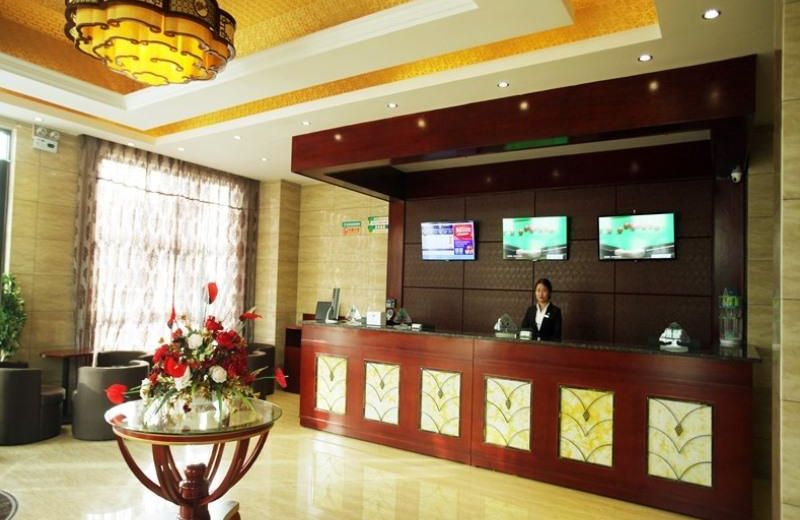Why choose this Luoyang tour ?
As one of the six ancient capitals, Luoyang is located on the central plain of China, the important cradle of the Chinese civilization. The world famous attractions in Luoyang and nearby are the Longmen Grottoes, the White Horse Temple, Luoyang Museum and the Shaolin Temple.
The Longmen Grottoes were listed as a World Heritage Site in Nov, 2000. The White Horse Temple was the first Buddhist temple in China in the year 64 of the Eastern Han Dynasty (25-220), the cradle of Buddhism in China. Shaolin Temple is famed for linking martial arts with Zen Buddhism.
Make the most of your Luoyang adventure
What makes Private Luoyang Longmen Grottoes & Shaolin Temple Day Tour from Luoyang a unique experience ?
The Longmen Grottoes, aka Longmen Caves, are between Mount Xiang and Mount Longmen and face Yi River. Longmen Grottoes, Yungang Caves and Mogao Caves are regarded as the three most famous treasure houses of stone inscriptions in China.
Who built the Longmen Grottoes? Emperor Xiaowen of Northern Wei Dynasty firstly directed the construstion around the year 493 when he moved the capital to Luoyang. After that, the Longmen Caves were continuously built during the 400 years until the Northern Song Dynasty (960-1127). The scenery area holds over 2,300 holes and niches, 2,800 steles, 40 dagobas, 1,300 caves and 100,000 statues. Most of them are the works of the Northern Wei Dynasty and the flourishing age of the Tang Dynasty (618-907). Lots of historical materials concerning art, music, religion, calligraphy, medicine, costume and architecture are kept here.
Shaolin Temple was established in 495A.D. at the western foot of Songshan Mountain, 13 kilometers northwest to Dengfeng City, Henan Province. The then-Emperor Xiaowen of the Northern Wei Dynasty (386-557) had the temple built to accommodate the Indian master Batuo (Buddhabhadra). Shaolin Temple literally means “temple in the thick forests of Shaoshi Mountain”.
As the first Shaolin abbot, Batuo (Buddhabhadra) devoted himself to translating Buddhist scriptures and preaching doctrines to hundreds of his followers. Later, another Indian monk Bodhidharma arrived at Shaolin Temple, who was said to have crossed the Yangtze River on a reed. He spent nine years meditating in a cave of the Wuru Peak and initiated the Chinese Chan tradition at Shaolin Temple. Thereafter, Bodhidharma was honored as the first Patriarch of Chan Buddhism. As Chinese Kungfu also originated from Shaolin Temple, it has been recognized as the origin of Chan Buddhism and the cradle of Kungfu.
Unexpectedly, we come to the Pagoda Forest, a graveyard for Buddhist dignitaries through the ages. On average, the pagodas are less than 15 meters (about 49 feet) high. The layer and the shape of a pagoda depend on many factors, such as one’s Buddhist status, attainment and prestige during his lifetime. The Pagoda Forest here is the largest of China’s pagoda complexes.
Tour Description & Additional Info:
- Suitable for all physical fitness levels
- No included the Travel insurance for your coverage of injury or accident
Options To Choose for Your Trip:
- private tour for 2 person
Add
private tour for 2 person
Pickup included - private tour for 3 person
Add
private tour for 3 person
Pickup included - private tour for 8 persons
Add
Pickup included - private tour for 7 person
Add
Pickup included - private tpur for 4 person
Add
private tour for 4 person
Pickup included - private tour for 5 person
Add
Pickup included - private tour for 1 person
Add
Private tour for 1 pax
Pickup included - private tour for 6 person
Add
Pickup included
Private Luoyang Longmen Grottoes & Shaolin Temple Day Tour from Luoyang Inclusions:
Included with Your Ticket
- Hotel Pickup & Dropoff Service
- Air-conditioned and clean vehicle with a private driver
- Local English Speaking Tour Guide
- Gas, toll & parking lot fees
- Luoyang Train Station Pickup & Dropoff Service
- Entrance Tickets
Not Included
- Accommodation
- Gratuity to the guide and driver
- Meals
Trending Luoyang Nearby Tours Likely To Sell Out
Special Instructions:
- This Tour is Provided by Local Tour.
- Tour Timezone & Starts at Asia/Shanghai.
- Mobile or paper ticket accepted.
- For a full refund, cancel at least 24 hours before the scheduled departure time.
- This Tour is Rated 4.5 Stars based on 2 valid reviews on VIATOR.
- Minimum 1 Travelers is required to book.
- Maximum 15 Travelers is accepted for booking.










